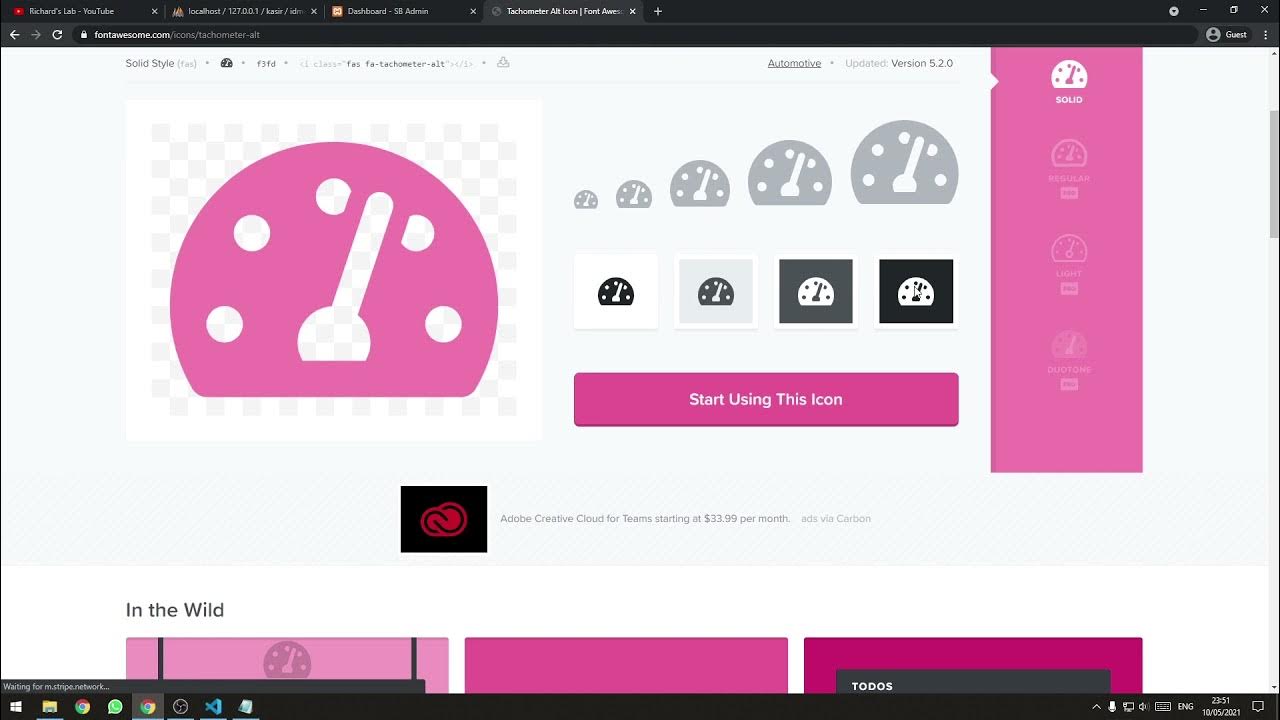[Part 1] Tutorial Aplikasi Kasir / Penjualan Berbasis Web PHP Native - Template + Setup Database
Summary
TLDRThis tutorial guides users through the process of creating a simple cash register application using PHP and MySQL. It covers setting up a database with tables for users, products, orders, and stock management, as well as integrating the SB Admin template for the user interface. The first part of the series focuses on database setup, including creating essential tables like 'users', 'products', 'orders', and 'stock entries'. In the second part, the template will be integrated into the application. This project allows for the management of multiple products in invoices, providing a useful tool for simple transactions.
Takeaways
- 😀 The tutorial covers how to create a simple cashier application using PHP, MySQL, and the XAMPP server.
- 😀 The application is similar to inventory management software but includes the ability to generate invoices with multiple products.
- 😀 The speaker uses a free template from Start Bootstrap for the design of the application, specifically the 'SB Admin' template.
- 😀 The tutorial involves setting up a new project directory in the XAMPP 'htdocs' folder for the cashier application.
- 😀 The speaker uses Visual Studio Code to write the PHP code and set up the necessary files, including function.php, index.php, and login.php.
- 😀 MySQL database setup is done using phpMyAdmin, and it involves creating several tables such as users, products, orders, and order details.
- 😀 The 'users' table includes fields for user ID, username, and password, but doesn't implement advanced security features like multi-level roles.
- 😀 The 'products' table stores product details, such as product ID, name, description, price, and stock quantity.
- 😀 The 'orders' table captures order details, including order ID, date, and user ID, with the user ID serving as a foreign key.
- 😀 The 'order details' table associates specific products with orders, including quantity, while the 'stock in' table manages inventory restocking.
Q & A
What is the main purpose of the tutorial?
-The tutorial aims to guide viewers in building a simple cashier application that generates invoices containing multiple products, unlike the stock management application, which handles only single product transactions.
Which template is used in the project, and where can it be found?
-The project uses the 'SB Admin' template, which can be downloaded from the website 'startbootstrap.com'.
What local server is used to host the project?
-The project is hosted on XAMPP, a local server environment that supports PHP and MySQL, using its 'htdocs' directory.
What are the main files created in the project?
-The main files created are 'function.php' for functions, 'index.php' for the main page, and 'login.php' for the login functionality.
What is the purpose of the 'function.php' file?
-The 'function.php' file is meant to store the functions that will be used across the project, facilitating modularity and reusability of code.
What is the structure of the database in the project?
-The database contains several tables: 'User' (for authentication), 'Product' (for product details), 'Order' (for order tracking), 'Order Detail' (for linking products to orders), and 'Stock In' (for managing stock replenishment).
What is the relationship between the 'Order' and 'Order Detail' tables?
-The 'Order' table acts as the parent, while the 'Order Detail' table is the child. The 'Order Detail' table references the 'Order' table with a foreign key to associate products with specific orders.
How does the system manage stock levels?
-Stock levels are managed through the 'Stock In' table, which tracks when products are added to inventory, with each entry recording the product ID, quantity, and date of entry.
Why is the 'id_user' field used in the 'Order' table?
-The 'id_user' field in the 'Order' table references the user who processed the transaction. It serves as a foreign key to associate the order with a specific admin or user.
What type of data is used for the 'password' field in the 'User' table?
-The 'password' field in the 'User' table is a varchar type with a length of 20 characters. The tutorial mentions that no encryption is used for the password in this basic example.
Outlines

このセクションは有料ユーザー限定です。 アクセスするには、アップグレードをお願いします。
今すぐアップグレードMindmap

このセクションは有料ユーザー限定です。 アクセスするには、アップグレードをお願いします。
今すぐアップグレードKeywords

このセクションは有料ユーザー限定です。 アクセスするには、アップグレードをお願いします。
今すぐアップグレードHighlights

このセクションは有料ユーザー限定です。 アクセスするには、アップグレードをお願いします。
今すぐアップグレードTranscripts

このセクションは有料ユーザー限定です。 アクセスするには、アップグレードをお願いします。
今すぐアップグレード関連動画をさらに表示

Belajar PHP untuk PEMULA | 3. PERSIAPAN LINGKUNGAN PENGEMBANGAN

Belajar Membuat Website Portal Berita dengan Codeigniter 3 - #1

[Part 2] Tutorial Aplikasi Kasir Sederhana / Penjualan Berbasis Web PHP Native - Setup Template

Cara Membuat Perpustakaan Digital Gratis dengan SLIMS

Tutorial Membuat Website Sekolah dengan PHP dan MySQL | Database #1

Belajar MySQL untuk Pemula - Cara Download dan Install MySQL di Windows 11
5.0 / 5 (0 votes)
